#laravel collection methods
Explore tagged Tumblr posts
Text
Unraveling the Power of Laravel Collections: A Comprehensive Guide
Laravel is a leader in web development and a shining example of excellence. With a wealth of features and tools to speed up the development process, the laravel PHP framework has completely changed how developers create apps. One of the standout features of Laravel is its Collection class, which provides a powerful toolkit for working with arrays of data. In this blog, we’ll delve into the world…

View On WordPress
#benefits of using Laravel framework#best Laravel development company in USA#Laravel Collection#laravel collection methods#laravel development agency#laravel framework development#laravel PHP framework#understanding laravel framework#what is Laravel collection
0 notes
Text
#Laravel Collection#laravel development agency#laravel collection methods#laravel PHP framework#best Laravel development company in USA#understanding laravel framework#what is Laravel Collection#benefits of using Laravel framework
0 notes
Text
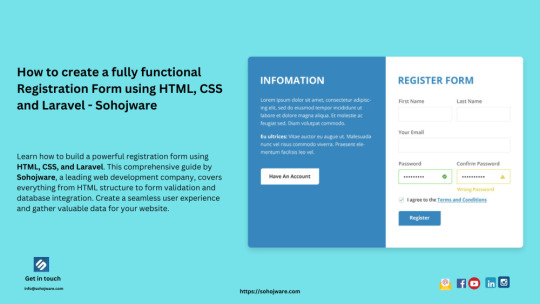
How To Create A Fully Functional Registration Form Using HTML, CSS And Laravel - Sohojware
In today’s digital age, having a functional and user-friendly registration form is crucial for any website or application. It allows users to create accounts, subscribe to services, or register for events. A well-designed registration form not only enhances the user experience but also helps you gather valuable data.
This comprehensive guide by Sohojware, a leading web development company in Bangladesh, will walk you through the process of creating a fully functional registration form using HTML, CSS, and Laravel. Laravel, a popular PHP framework, provides a robust foundation for building secure and scalable web applications.
What you’ll learn in this guide:
Understanding the components of a registration form
Building the HTML structure for the registration form
Styling the registration form with CSS
Integrating form functionality with Laravel
Components of a Registration Form:
Before diving into the code, let’s understand the common components of a well-designed registration form:
Input fields: These are where users enter their information, such as name, email address, username, and password. There are different types of input fields like text boxes, dropdown menus, and checkboxes, depending on the information you want to collect.
Labels: Labels identify each input field, making the registration form intuitive for users.
Validation: This ensures users enter data in the correct format. For example, email addresses must follow a specific format, and passwords must meet certain length and complexity requirements.
Submit button: This button triggers the form submission process.
Confirmation message: A clear message appears after successful registration, informing users their account has been created.
Building the HTML Structure:
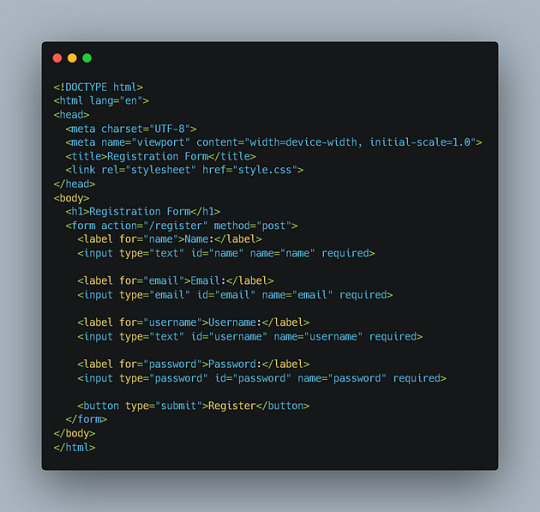
This code defines a basic registration form with input fields for name, email, username, and password. It also includes a submit button. Note that the action attribute in the <form> tag specifies the URL where the form data will be submitted, and the method attribute defines the HTTP method (POST in this case).
Styling the Registration Form with CSS:
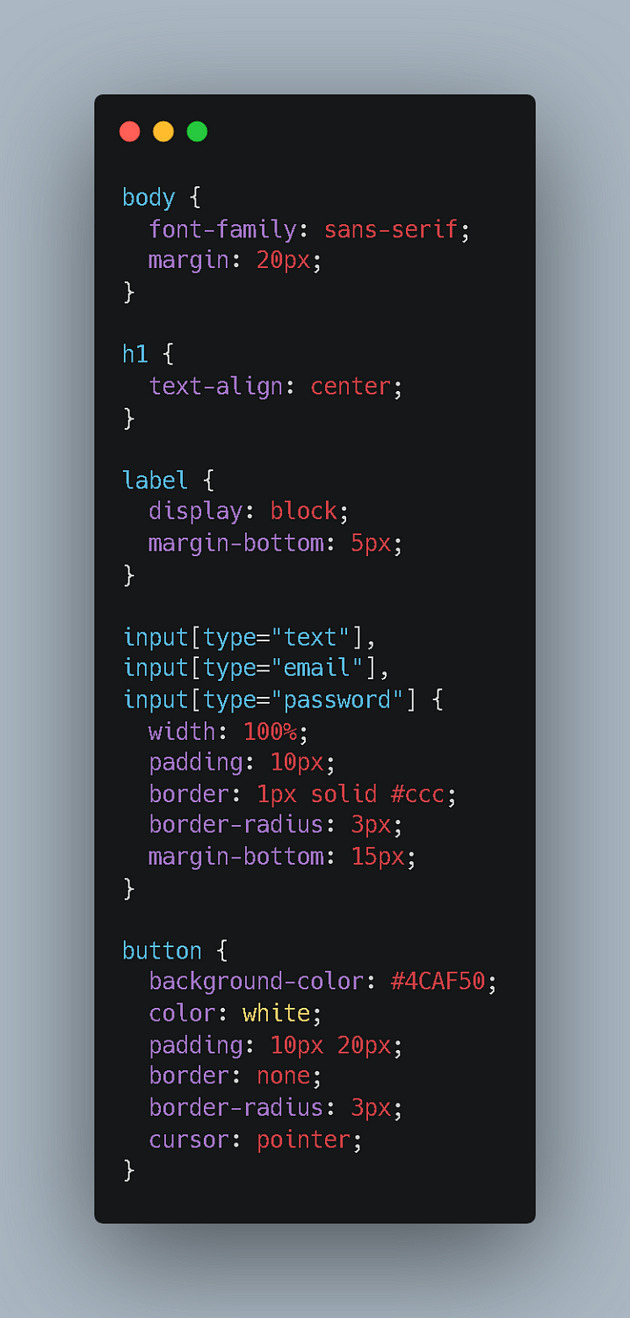
This code styles the form elements, making it visually appealing and user-friendly. You can further customize the styles to match your website’s design.
Integrating Form Functionality with Laravel
To make your registration form functional, you’ll need to integrate it with Laravel’s routing, validation, and database functionalities. Here’s how:
Create a Laravel Route: In your routes/web.php file, define a route to handle the form submission:

This route specifies that when a POST request is made to the /register URL, the store method in the RegistrationController class will be called.
Create a Controller: Generate a new controller using the Artisan CLI command:

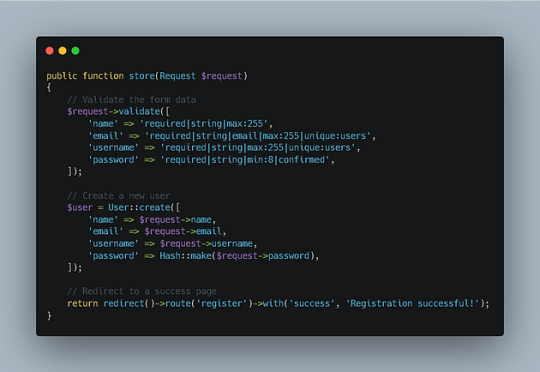
This code first validates the form data using Laravel’s validation rules. If the validation passes, it creates a new user record in your database using the User model. Finally, it redirects the user to a success page with a confirmation message.
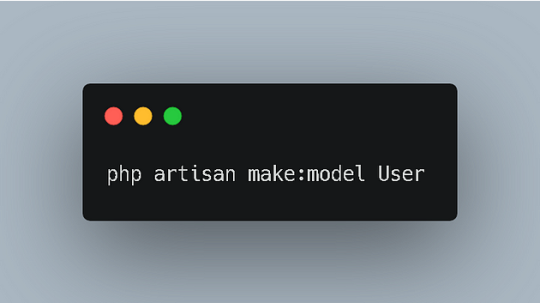
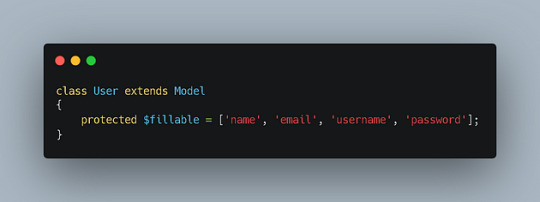
Configure Database: Make sure your database connection is configured in your .env file.
Additional Considerations:
Security: Implement proper security measures to protect user data, such as hashing passwords and using secure encryption techniques.
Error Handling: Provide informative error messages to users if their form data is invalid.
Email Verification: Consider sending a verification email to users after registration to confirm their account.
Customization: Customize the registration form to match your website’s design and branding.
By following these steps, you can create a fully functional registration form using HTML, CSS, and Laravel, providing a seamless user experience for your website or application.
1 note
·
View note
Text
Laravel 10: Revolutionizing PHP Development with Game-Changing Features

Laravel 10: A Game-Changer in PHP Development
As a seasoned Laravel developer, I've seen the framework evolve over the years, but Laravel 10 truly stands out. Released on February 14, 2023, this version brings a slew of improvements that have significantly enhanced my day-to-day coding experience. Let's dive into what makes Laravel 10 a game-changer in the world of PHP development.
PHP 8.1: The New Baseline
First things first, Laravel 10 requires PHP 8.1 at minimum. This might seem like a small change, but it's opened up a world of possibilities. I remember working on a project for a local e-commerce startup where we were stuck with PHP 7.4. Upgrading to Laravel 10 forced us to update our PHP version, and the performance gains were immediately noticeable. Our API response times dropped by almost 20%, which was a huge win for the mobile app that depended on it.
The Core: Refined and Polished
One of the first things that caught my eye was the improved console output styling. It might seem trivial, but when you're debugging a complex application at 2 AM (we've all been there), clear console output can be a lifesaver. The new styling makes it much easier to spot errors and warnings at a glance.
The introduction of invokable validation rules is another feature I've grown to love. In a recent project for a financial services client, we had a complex set of validation rules for loan applications. Previously, our code was cluttered with numerous rule classes. With invokable rules, we simplified our codebase significantly, making it much easier for new team members to understand and maintain.
Database Magic with Eloquent
Eloquent, Laravel's ORM, has always been a strong point, but Laravel 10 takes it up a notch in web development. The new `whenEmpty` and `whenNotEmpty` methods for collections have been a game-changer in how I handle data. In a recent project for a content management system, we used these methods to elegantly handle conditional data processing, reducing our code complexity by a good margin.
The `saveQuietly` method for model saving without events is another gem. In a high-traffic application we built for a news aggregator, we needed to update read counts without triggering a cascade of events. This method allowed us to do just that, significantly reducing server load during peak hours.
Authentication and Security: Fortified Defenses
Security is paramount in web development, and Laravel 10 doesn't disappoint. The improvements to Laravel Sanctum have made API authentication even more robust. In a recent project for a healthcare provider, we used Sanctum to secure sensitive patient data APIs. The enhanced token management made it easier to implement and maintain a secure system that complied with strict healthcare regulations.
The updated password validation rules are another welcome addition. Gone are the days of writing custom validation for password strength. In a recent e-commerce project, implementing strong password policies was as simple as using Laravel's built-in rules, saving us time and ensuring consistent security across the application.
Frontend and UI: A Fresh Coat of Paint
While Laravel excels in backend development, it hasn't forgotten about the frontend. The updates to Laravel Breeze have made setting up authentication scaffolding even smoother. In a recent project for a small business management tool, we used Breeze to set up a fully functional authentication system in minutes, allowing us to focus more on the core business logic.
The improved Vite integration is another standout feature. In a recent single-page application (SPA) project, the hot module replacement provided by Vite significantly sped up our development process. We could see changes in real-time without full page reloads, which was a massive productivity boost for our frontend team.
Testing: Confidence in Every Commit
As a firm believer in test-driven development (TDD), the testing enhancements in Laravel 10 have been a breath of fresh air. The new `assertValid` and `assertInvalid` methods have simplified our validation tests. In a recent project for a survey application, these methods allowed us to write more expressive tests for our form submissions, making our test suite more readable and maintainable in laravel development.
The improved HTTP fake responses have also been a game-changer for testing API integrations. In a project where we were integrating with a finicky third-party payment gateway, these fake responses allowed us to simulate various scenarios easily, ensuring our error handling was robust before going live.
Performance: Speed Where It Counts
Performance optimizations might not be the flashiest features, but they make a real difference in production. The optimized Eloquent queries have had a noticeable impact on database-heavy applications. In a recent project for a logistics company, where we were handling millions of shipment records, these optimizations resulted in a 15% reduction in query times for some of our most complex reports.
The improved cache handling has also been a boon for high-traffic applications. In a social media analytics tool we developed, the enhanced caching mechanisms allowed us to serve real-time data to thousands of concurrent users without breaking a sweat.
Developer Experience: The Little Things Matter
It's often the small things that make a big difference in day-to-day development. The improved error messages and debugging in Laravel 10 have saved me countless hours of head-scratching. In a particularly tricky bug involving nested relationships, the enhanced error reporting pointed me directly to the issue, turning what could have been a day-long debug session into a quick fix.
The enhanced IDE support and type hinting have also been a productivity booster. It's made onboarding new team members much smoother, as the improved autocompletion and type information guide developers towards correct usage of Laravel's features.
Real-World Impact
To give you a concrete example of how Laravel 10 has made a difference, let me share a recent project experience. We were tasked with rebuilding a legacy inventory management system for a mid-sized manufacturing company. The old system was a monolithic PHP application that was struggling under the weight of increased data and user load.
Using Laravel 10, we rebuilt the system from the ground up. We leveraged the improved Eloquent query builder to optimize complex inventory queries that were previously bringing the old system to its knees. The enhanced database queue handling allowed us to process large batch updates smoothly, even during peak operation hours.
We used Laravel Sanctum to secure the API that the shop floor tablets used to update inventory in real-time. The improved token management made it easy to handle authentication for multiple device types securely.
For the admin dashboard, we used Laravel Breeze with Inertia.js, taking advantage of the improved Vite integration for a snappy, SPA-like experience. The new testing features allowed us to maintain a comprehensive test suite, giving us the confidence to deploy updates frequently.
The result? A system that was not only faster and more reliable but also easier to maintain and extend. The client reported a 40% increase in inventory turnover and a significant reduction in data entry errors. This project showcased how the various improvements in Laravel 10 could come together to deliver real business value.
Conclusion
Laravel 10 is more than just an incremental update; it's a significant step forward for the framework. From performance optimizations to developer experience improvements, every aspect has been carefully considered and refined. As someone who's worked with Laravel since its early days, I can confidently say that version 10 sets a new standard for what we can expect from a modern PHP framework.
Whether you're building a simple blog or a complex enterprise application, Laravel 10 provides the tools and features to make your development process smoother, more efficient, and dare I say, more enjoyable. So, if you haven't already, it's time to upgrade and experience the future of PHP development with Laravel 10. Trust me, your future self (and your clients) will thank you.
0 notes
Text
Laravel: Reasons for the Framework's Popularity
Laravel is incredibly popular all over the world due to its features and advantages - millions of developers cannot imagine their life without this PHP framework and create a variety of applications on it, including online marketplace development.
In PHP 7, RAM usage for script execution has been significantly reduced (compared to PHP 5) – the performance gain is especially noticeable in conjunction with Zend OPCache. For example, the Laravel Forge platform allows for maximum data processing acceleration due to optimal Zend OPCache settings.

This is the reason why PHP frameworks are tested without caching, including when performing file operations - usually it comes down to multiple calls to a page created in PHP. In terms of performance, Laravel is not much different from other PHP frameworks today, but this tool surpasses most competitors in such aspects as scalability, versatility, flexibility and data caching.
Laravel allows you to create user registration and login systems for your site, as well as authenticate users by connecting OAuth (the ability to log in to your site via social network accounts) using Laravel Socialite. Learning the popular framework will help laravel development company radically improve their knowledge of PHP, as well as in developing high-load sites and other projects.
The developers are constantly improving their framework. Working with Laravel, you will definitely not be left behind in the world of web development and will not find yourself in the last century one day! The popular PHP framework provides developers with unlimited possibilities, so below we will consider only the main functionality and features:
Laravel is built on top of Symfony components.
The developer can connect additional modules as provider packages. In Laravel 5.5 and later, installation is done using Composer. The module becomes available immediately after installation, no changes to the code are required.
There are no problems with expanding components - the developer and framework codes are separated.
The simple Blade template engine will be understandable even to a novice developer with minimal experience in HTML layout. CSS, HTML and JavaScript code are located in separate directories.
Assigning attributes to incoming parameters, convenient routing system.
Fast caching, efficient work with databases and data storages of various types.
Functionality for migration and changing the structure of the database.
Ability to work with SSH, task scheduler, console.
SQL Injection is no longer scary - Eloquent ORM provides reliable protection against attacks, in addition, the functionality allows you to load data from several tables and process information coming from the database in parts.
Laravel Collections saves a ton of time - these PHP arrays have very advanced features.
Routing, configuration and template files are cached, which significantly speeds up the framework's performance.
Notifications are sent via e-mail, Slack and other methods (can be added if necessary).
The ability to create interactive applications thanks to WebSockets support.
Multilingual. The framework supports a large number of languages by default, and additional packages can be installed independently if necessary.
Convenient command line interface for generating components, running tasks and other features.
Ability to work with project code via the command line using Laravel Tinker.
Impressive functionality for testing projects of various levels: websites, applications, etc.
A huge library of packages, located on the official website of the framework.
Full text search support.
The creators of Laravel position their product as a PHP framework for webmasters who love beautiful code. And these are not empty words! The framework code is well-thought-out, readable and beautiful – it is easy to work with. A large team of specialists is working on the development of Laravel, who are constantly improving their product.
The main objective of this material is to provide beginner web programmers with a basic set of knowledge that will allow them to form a certain idea of Laravel and its capabilities. This is not just another PHP framework, but a whole system that is constantly evolving. Laravel is one of the leading trends in web development, which has become the number one solution for millions of beginners and experienced specialists.
0 notes
Text
Laravel Eloquent: Mastering the Art of Database Interactions
Laravel Eloquent is an Object-Relational Mapping (ORM) layer that comes built-in with the Laravel framework. It serves as an abstraction layer that allows developers to interact with databases using PHP objects and classes, rather than writing raw SQL queries. Eloquent simplifies the process of retrieving, inserting, updating, and deleting data from the database, making it more efficient and less error-prone.

One of the key features of Eloquent is its ability to represent database tables as models. Models are PHP classes that correspond to database tables, and each instance of a model represents a row in that table. Eloquent provides a set of methods and conventions that allow developers to define relationships between models, such as one-to-one, one-to-many, and many-to-many relationships.
Mastering the art of database interactions with Eloquent involves understanding the following concepts:
1. Model Definition: Creating models that correspond to database tables, defining table names, primary keys, and other properties.
2. Retrieving Data: Using Eloquent's query builder to fetch data from the database, including techniques like eager loading, chunking, and scoping.
3. Inserting and Updating Data: Creating new records, updating existing records, and handling mass assignment protection.
4. Relationships: Defining and working with one-to-one, one-to-many, and many-to-many relationships between models.
5. Eloquent Events: Handling events such as model creation, updating, and deleting, to perform additional logic or data manipulation.
6. Query Scopes: Defining reusable query constraints to simplify complex queries.
7. Accessors and Mutators: Customizing how Eloquent retrieves and stores data in the database, allowing for data transformation and formatting.
8. Eloquent Collections: Working with collections of models, and utilizing the collection's powerful methods for data manipulation and transformation.
9. Database Migrations: Using Laravel's migration system to create and manage database schema changes in a controlled and versioned manner.
10. Eloquent Serialization: Converting Eloquent models to and from various formats, such as JSON or arrays, for data transfer or storage.
By mastering these concepts, developers can leverage the power of Eloquent to build robust and scalable applications with efficient database interactions. Eloquent not only simplifies database operations but also promotes code organization, maintainability, and testability.
In Laravel, Eloquent models serve as the bridge between your application's logic and the underlying database. Each model corresponds to a specific database table, representing its structure and facilitating interactions with the records stored within that table.
Eloquent Model Structure
An Eloquent model is a PHP class that extends the base `Illuminate\Database\Eloquent\Model` class provided by Laravel. This base class provides a wide range of functionality for interacting with the database, including methods for creating, reading, updating, and deleting records.
Within an Eloquent model, you define the properties and relationships that correspond to the columns and associations of the respective database table. This includes specifying the table name, primary key, timestamps, and any additional attributes or behaviors specific to that model.
Defining Database Table Attributes
One of the primary responsibilities of an Eloquent model is to define the structure of the corresponding database table. This includes specifying the table name, primary key, and any other relevant attributes.
By default, Laravel follows a convention where the model name is singular, and the corresponding table name is the plural form of the model name. For example, a model named `User` would map to a table named `users`. However, you can override this convention by explicitly defining the table name within the model.
Models also define any timestamps columns (e.g., `created_at` and `updated_at`) and specify the primary key column if it differs from the default `id`.
Encapsulating Database Interactions
Eloquent models encapsulate all interactions with the database table they represent. This includes creating new records, retrieving existing records, updating records, and deleting records.
Instead of writing raw SQL queries, developers can leverage Eloquent's fluent interface, which provides a set of expressive methods for performing database operations. These methods allow you to build complex queries in a concise and readable manner, reducing the risk of SQL injection vulnerabilities and promoting code maintainability.
For example, to retrieve all records from a table, you can simply call the `all()` method on the corresponding model. To create a new record, you instantiate the model, set its properties, and call the `save()` method. Eloquent handles the underlying SQL statements and database interactions transparently.
Defining Model Relationships
Another crucial aspect of Eloquent models is the ability to define relationships between different database tables. Laravel supports various types of relationships, including one-to-one, one-to-many, and many-to-many.
By defining these relationships within the models, you can easily access and manipulate related data without writing complex join queries. Eloquent provides methods for eager loading related data, reducing the need for multiple database queries and improving performance.
Overall, Eloquent models serve as the backbone of database interactions in Laravel applications. They encapsulate the structure and behavior of database tables, facilitate database operations through a fluent interface, and enable the definition of relationships between tables. By leveraging Eloquent models, developers can write more maintainable and expressive code while reducing the risk of SQL injection vulnerabilities and promoting code organization.
CRUD (Create, Read, Update, Delete) operations are the fundamental actions that allow you to manage data in a database. Laravel's Eloquent ORM provides a set of methods that simplify these operations, making it easy to interact with database records without writing raw SQL queries.
Create
Eloquent provides several methods to create new records in the database. The most commonly used method is `create`, which accepts an array of key-value pairs representing the columns and their respective values. Eloquent handles the insertion of the new record into the database table.
Additionally, you can instantiate a new model instance, set its properties, and then call the `save` method to persist the record in the database.
Read
Retrieving data from the database is a common operation, and Eloquent offers a variety of methods to fetch records. The `all` method retrieves all records from the database table associated with the model. You can also use the `find` method to retrieve a single record by its primary key value.
Eloquent allows you to build complex queries using its fluent query builder, enabling you to filter, sort, and apply constraints to the retrieved data based on your application's requirements.
Update
Updating existing records in the database is straightforward with Eloquent. You can retrieve an existing record using methods like `find` or `findOrFail`, modify its properties, and then call the `save` method to persist the changes to the database.
Alternatively, you can use the `update` method to update one or more records in the database based on specific conditions. This method accepts an array of key-value pairs representing the columns and their new values, along with a condition specifying which records should be updated.
Delete
Deleting records from the database is handled by the `delete` method in Eloquent. You can retrieve a specific record using methods like `find` or `findOrFail` and then call the `delete` method on that instance to remove it from the database.
Eloquent also provides the `destroy` method, which allows you to delete one or more records based on their primary key values or specific conditions.
In addition to these fundamental CRUD operations, Eloquent offers several other methods and features that enhance database interactions. These include:
1. Relationships: Eloquent allows you to define and work with relationships between models, such as one-to-one, one-to-many, and many-to-many relationships, simplifying the retrieval and manipulation of related data.
2. Accessors and Mutators: These allow you to customize how Eloquent retrieves and stores data in the database, enabling data transformation and formatting.
3. Scopes: Scopes provide a way to define reusable query constraints, making it easier to build complex queries across your application.
4. Events: Eloquent provides a set of events that you can hook into, allowing you to perform additional logic or data manipulation before or after various database operations.
By leveraging Eloquent's methods and features for CRUD operations, developers can write more concise and expressive code while reducing the risk of SQL injection vulnerabilities and promoting code maintainability.
In relational databases, tables often have relationships with one another. For example, a blog post may have many comments, or a user may have multiple addresses. Laravel's Eloquent ORM provides a convenient way to define and work with these relationships between models, making it easier to retrieve and manipulate related data.
One-to-One Relationships
A one-to-one relationship is a type of relationship where one record in a table is associated with a single record in another table. For example, a `User` model might have a one-to-one relationship with an `Address` model, where each user has a single address associated with them.
In Eloquent, you can define a one-to-one relationship using methods like `hasOne` and `belongsTo`. These methods allow you to specify the related model and the foreign key column that links the two tables together.
One-to-Many Relationships
A one-to-many relationship is a type of relationship where a single record in one table can be associated with multiple records in another table. For example, a `User` model might have a one-to-many relationship with a `Post` model, where each user can have multiple blog posts.
Eloquent provides methods like `hasMany` and `belongsTo` to define one-to-many relationships. The `hasMany` method is used on the parent model (e.g., `User`), while the `belongsTo` method is used on the child model (e.g., `Post`).
Many-to-Many Relationships
A many-to-many relationship is a type of relationship where multiple records in one table can be associated with multiple records in another table. For example, a `User` model might have a many-to-many relationship with a `Role` model, where a user can have multiple roles, and a role can be assigned to multiple users.
In Eloquent, many-to-many relationships are defined using methods like `belongsToMany` on both models involved in the relationship. Additionally, you need to specify an intermediate table (often called a pivot table) that stores the mapping between the two models.
Defining Relationships
Relationships in Eloquent are typically defined within the model classes themselves. For example, in a `User` model, you might define a one-to-many relationship with the `Post` model like this:
```php
class User extends Model
{
public function posts()
{
return $this->hasMany(Post::class);
}
}
```
And in the `Post` model, you would define the inverse relationship:
```php
class Post extends Model
{
public function user()
{
return $this->belongsTo(User::class);
}
}
```
Working with Relationships
Once you have defined the relationships between your models, Eloquent provides several methods to interact with related data. For example, you can retrieve a user's posts like this:
```php
$user = User::findOrFail(1);
$posts = $user->posts;
```
You can also create new related records, update existing related records, and remove related records using Eloquent's relationship methods.
Eloquent relationships make it easier to work with related data in your application, reducing the need for complex join queries and promoting code organization and maintainability.
Query Scopes are a powerful feature in Eloquent that allow developers to encapsulate and reuse common query constraints or modifications. They provide a way to define reusable query logic that can be easily applied to Eloquent queries, enhancing code readability, maintainability, and reducing duplication.
What are Query Scopes?
Query Scopes are essentially methods defined within an Eloquent model that add additional constraints or modifications to the query builder instance. These methods can be chained together with other Eloquent query builder methods, allowing for the creation of complex and expressive queries.
There are two types of Query Scopes in Eloquent:
1. Local Scopes: These are scopes defined within a specific Eloquent model and can only be used with that model.
2. Global Scopes: These are scopes that are applied to all queries for a given model, regardless of where the query is constructed.
Benefits of Query Scopes
Query Scopes provide several benefits that enhance the development experience and code quality:
1. Reusability: By encapsulating common query logic into scopes, developers can easily reuse these scopes across different parts of their application, reducing code duplication.
2. Readability: Well-named scopes make queries more self-documenting and easier to understand, improving code readability and maintainability.
3. Testability: Since scopes are defined as methods within the Eloquent model, they can be easily unit tested, ensuring the correctness of the query logic.
4. Abstraction: Scopes abstract away complex query logic, allowing developers to focus on the higher-level application logic.
Using Query Scopes
To define a local scope, you create a method within your Eloquent model that returns an instance of the query builder with the desired constraints or modifications applied. For example, you might define a scope to retrieve only active users like this:
```php
class User extends Model
{
public function scopeActive($query)
{
return $query->where('active', true);
}
}
```
You can then use this scope when querying for users:
```php
$activeUsers = User::active()->get();
```
Global scopes, on the other hand, are defined using the `addGlobalScope` method within the `boot` method of your Eloquent model. These scopes are automatically applied to all queries for that model.
```php
class User extends Model
{
protected static function boot()
{
parent::boot();
static::addGlobalScope('active', function ($query) {
$query->where('active', true);
});
}
}
```
In addition to defining custom scopes, Eloquent also provides several built-in scopes, such as `whereKey`, `whereKeyNot`, and `latest`, among others.
By leveraging Query Scopes, developers can create more readable, maintainable, and testable code while reducing duplication and promoting code organization within their Laravel applications.
In Laravel, when you retrieve data from the database using Eloquent, the results are returned as instances of the `Illuminate\Database\Eloquent\Collection` class. Eloquent Collections are powerful data structures that provide a rich set of methods for working with and manipulating the retrieved data.
What are Eloquent Collections?
Eloquent Collections are Laravel's implementation of the collection data structure, designed to store and manipulate collections of related objects or items, such as Eloquent models or arrays. They serve as a wrapper around the underlying data, providing a consistent and intuitive interface for interacting with that data.
Benefits of Eloquent Collections
Working with Eloquent Collections offers several advantages:
1. Fluent Interface: Collections provide a fluent interface with a wide range of methods for manipulating and transforming data, making it easy to chain multiple operations together.
2. Immutable Data: Collections are immutable, meaning that when you perform an operation on a collection, a new instance is returned, leaving the original collection unchanged. This helps prevent unintended side effects and promotes functional programming patterns.
3. Lazy Loading: Collections support lazy loading, which means that data transformations or operations are not applied until the collection is actually used or iterated over. This can lead to significant performance improvements, especially when working with large datasets.
4. Type Safety: Collections enforce type safety, ensuring that only objects of the same type are stored and manipulated within a given collection.
5. Consistency: Eloquent Collections provide a consistent interface for working with data, regardless of the source (e.g., database queries, arrays, or other collections).
Working with Eloquent Collections
Eloquent Collections offer a wide range of methods for manipulating and transforming data. Here are some common operations you can perform on collections:
Filtering: You can use methods like `filter`, `where`, `reject`, and `whereIn` to filter the items in a collection based on specific conditions or criteria.
Mapping and Transforming: Methods like `map`, `transform`, `flatMap`, and `flatten` allow you to apply transformations or operations to each item in the collection, returning a new collection with the transformed data.
Reducing and Aggregating: You can use methods like `reduce`, `sum`, `avg`, and `max` to perform aggregations or reductions on the data in the collection.
Sorting and Reordering: Collections provide methods like `sort`, `sortBy`, and `sortByDesc` for sorting and reordering the items based on specific criteria.
Retrieving and Checking: Methods like `first`, `last`, `contains`, and `isEmpty` allow you to retrieve specific items or check for the existence of items in the collection.
Eloquent Collections also integrate seamlessly with other Laravel features, such as pagination and caching, making it easier to work with large datasets and improve application performance.
By leveraging the power of Eloquent Collections, developers can write more expressive and maintainable code for manipulating and transforming data retrieved from the database, further enhancing the productivity and effectiveness of working with Laravel's Eloquent ORM.
Conclusion:
Laravel Eloquent empowers developers to master the art of database interactions by offering a clean, expressive syntax for working with databases. Its features, from simple CRUD operations to advanced relationships and query scopes, enable developers to build scalable and maintainable applications without sacrificing readability. Eloquent Collections, a powerful data structure, provide a rich set of methods for working with and manipulating retrieved data, making expertise in Collections highly valuable when looking to hire Laravel developers or partnering with a Laravel development company. By embracing Eloquent, Laravel developers can streamline their workflow, focus on creating innovative solutions, and make the database interaction process a joy rather than a challenge, ultimately delivering high-quality, efficient applications.
0 notes
Text
5 Unit Testing Tools You Must Know in 2024

Introduction:
Unit testing is one of the most important areas to ensure code coverage and basic testing for the applications or software in today’s world. With so many different unit testing tools available, Choosing the right tool can be challenging.
Don't Worry, In this Article we'll explore 5 Unit Testing Tool you must know in 2024!
So without delaying further let's start!
What is Unit Testing?
Before we begin, Let's understand what is Unit Testing!
Unit testing is a type of software testing where we test every single units or components of a software system. It's a very fundamental testing technique where we can found the bugs very easily with this method of testing.
Unit testing involves testing the smallest components in an application, such as functions or methods, to ensure they meet their design and intended behavior.
Benefits:
Unit testing has many benefits some of them are mentioned below:
Early Bug Detection: By testing small unit/function we can find the bug in very early stage.
Improved Software Design: It helps to write modular & decoupled code that is easier to understand, maintain, and test.
Facilitates Refactoring and Code Maintenance: Unit tests provide a safety net for refactoring code. When developers refactor the code, the tests can quickly identify if any bugs have been introduced.
Automation and Continuous Testing: Unit tests can be automated and integrated into the development process.
5 Unit Testing Tools:
1. JMockit:
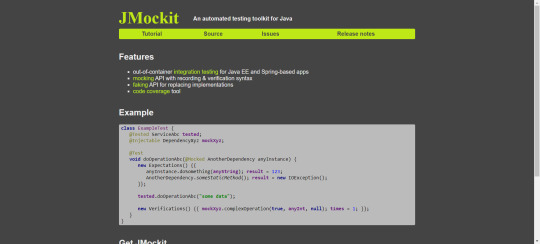
JMockit is an open-source tool for Unit Testing with the collection of tools and API.It is designed to be used with testing frameworks like JUnit or TestNG.
JMockit allows users to mock various elements such as public and private methods, field values, static methods, static blocks, and constructor.
2. SimpleTest:
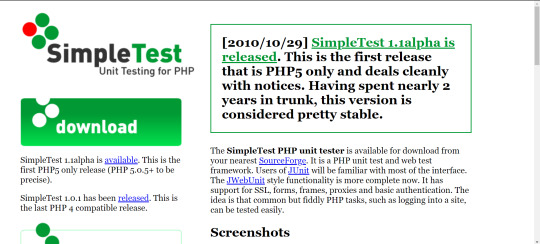
It is an open-source unit testing framework dedicated to PHP Programming Language.
It is used for testing PHP applications, including Drupal projects. It provides features such as xUnit style test cases, mock objects, and a built-in web browser for testing web sites directly.
3. PHPUnit:
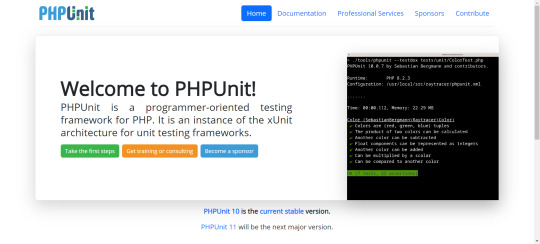
PHPUnit is a unit testing framework for PHP developers. Its building block is derived from the xUnit design for the unit testing system. We can use PHPUnit in the Command line as well which makes it more preferred by the QA testers.
PHPUnit is integrated with virtually all of the main PHP development such as Laravel, Symfony, Zend, Yii, CakePHP, and so on.
4. NUnit:
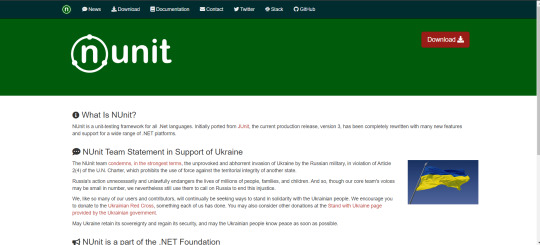
NUnit is an open-source unit testing tool for the .NET platform and languages. It is also part of the .NET Foundation. NUnit is a convenient framework for writing tests, along with its accompanying documentation.
It allows developers and QA testers to add relevant metadata attributes to improve a unit test's context.
5. Mockito:
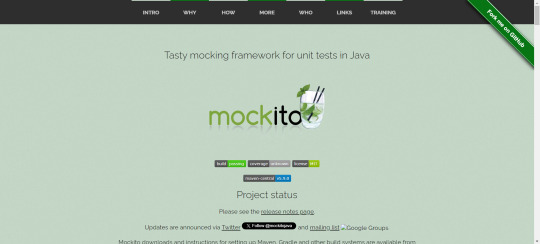
Mockito is an open-source mocking framework with a simple and clean API that enables you to write readable, verifiable tests. Mockito makes it easier for both developers as well as tester to create Mock Data.
Mockito integrates with Cucumber, Spring, and Jenkins, along with built-in support for managing a mocking life cycle with JUnit.
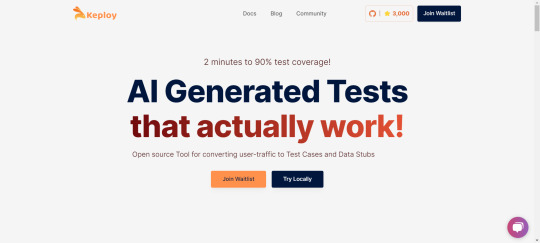
Conclusion
If you found this blog post helpful, please consider sharing it with others who might benefit. You can also follow me for more content on Javascript, React, and other web Development topics.
0 notes
Photo

chunk | Laravel Collections In this episode we are tackling, the method chunk(). For the best experience, follow along in our interactive school at About This ... source
#“laravel collection generate new transformed array”#“laravel collection move item”#“laravel collection remove keys”#“laravel collections chunk”#Laravel#laravel 6#laravel 6 collections#laravel add to collection#laravel advanced#laravel array#laravel collection#laravel collection filter example#laravel collection methods#laravel collection modify item#laravel collection modify value#laravel merge two collections
0 notes
Text
Development Update - March 2023
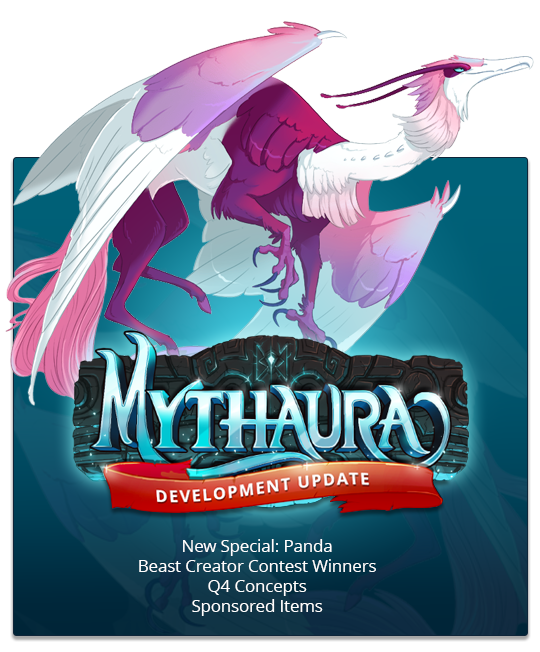
Hi there folks, Miyazaki here with Mythaura’s development update for the month of March!
Topics covered include:
New Special: Panda
Beast Creator Contest Winners
Ko-fi Q4 2023 Concepts
Ko-fi Sponsored Items
More info available under the cut!

New Special: Panda

We’ve added our newest Special marking to the Beast Creator demo: Panda!
Panda has coverage on a beast’s limbs and eyes. This Special has a lot of fun layering opportunities with other Specials–be sure to play around with it to see for yourself all the potential it can bring!

Beast Creator Contest Winners

Thank you for all the great submissions to the Beast Design Contest! You all never cease to impress us with your creativity. For the March 2023 Beast Creator Contest we’ve got our three winners: iddq_tea, Zelie, and LMNas!
Our three winners will each have the rewards automatically applied to their accounts, and these three beasts will be featured on the homepage for Quarter 4 (April through June).
Keep an eye out for our next Beast Creator Contest–we’ll be gathering entries in June to display on our site for Quarter 1 (July through September).

Ko-fi Quarter 4 (2023) Concepts


It’s the first day of Quarter 4 (2023), which means we’ve got new Quarterly Rewards for Sponsors to vote on on our Ko-fi page!
Which concepts would you like to see made into official site items? Sponsors of Bronze level or higher have a vote in deciding. Please check out the Companion post and the Glamour post on Ko-fi to cast your vote for the winning concepts!
Votes must be posted by April 30, 2023 at 11:59pm PDT in order to be considered.
All Quarter 3 (2023) Rewards are now listed in our Ko-fi Shop for individual purchase for all Sponsor levels at $5 USD flat rate per unit. As a reminder, please remember that no more than 3 units of any given item can be purchased. If you purchase more than 3 units of any given item, your entire purchase will be refunded and you will need to place your order again, this time with no more than 3 units of any given item.
Hopefully in the future Ko-fi will offer the functionality to limit purchases per user, but for the time being we will be reviewing orders manually and reaching out to those who disregard these instructions.
Quarter 3 (2023) Companion: Shimmer Kelp-Dancer
Quarter 3 (2023) Glamour: Tainted Claws
Quarter 3 (2023) Solid Gold Glamour: Kirin

Ko-fi Sponsored Items

Daybright Peafox, Sunrise Peafox, Midnight Peafox
Sponsored by: Alex


White Inkmink, Onyx Inkmink, Coral Inkmink
Sponsored by: Zebrask


Sneering Snerret
Sponsored by: Rainy





Boreal Vigilhound, Umbral Vigilhound, Gilded Vigilhound, Argent Vigilhound
Sponsored by: Alanna


Ornamental Curved Dagger
Sponsored by: Percy

Mythaura v0.13
Upgraded to Laravel 10.
Adjusted how sessions are handled to create better cross-domain performance.
Prevents actions from resolving in battle when the target is already defeated.
Admin CMS cleanups and adjustments.
Adds webhook to handle battle disconnects.
Adjusts validation method in pusher webhooks.
Created tool to collect debugging info on battles.
Added ability for admins to force a cache override when needed.
Adjusted UI to better handle when a beast is defeated.
Began initial balancing on battle.
Properly implemented surge abilities.
Refactored battle element icons.
Many various bug fixes and tweaks to battle UI.

Thank You!
We appreciate you sticking through to the end of this month’s updates!
May will mark one year from the time that the current dev team started work on Mythaura, and our May 1, 2023 update will feature a video detailing an integral part of the Mythaura gameplay loop: the battle system.
Mythaura’s player versus player (PVP) battle demo will go live with the June 1, 2023 update. We’re so excited to see everyone partake in this system, and look forward to your feedback!
See you around the Discord!
#mythaura#petsite#virtual pet site#virtual pet sim#pet site#game dev#indie game dev#development update#dev update#neopets#wolvden#lioden#long post#indie games#game development#rpg#rpgs#roleplay games#dragon#unicorn#griffin#ryu#peryton#basilisk#hippogriff#kirin#quetzal
43 notes
·
View notes
Photo
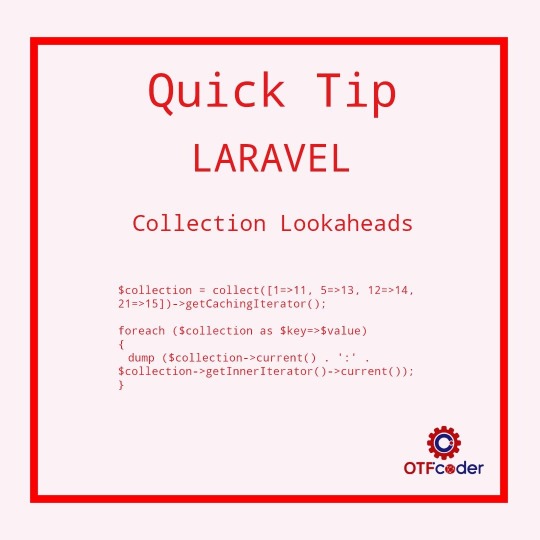
#Laravel Tip for the Day...
𝗖𝗼𝗹𝗹𝗲𝗰𝘁𝗶𝗼𝗻 𝗟𝗼𝗼𝗸𝗮𝗵𝗲𝗮𝗱𝘀
Follow us on Facebook, Instagram, LinkedIn, Pinterest, Tumblr, And Twitter...for more Tips and Updates...
#collections #laraveldevelopers #laraveltips #laravelphp #tips #webdevelopmentcompany #coding #codingtips #otfcoder #otfcodermarketingservices #laraveldeveloper #tipsandtricks #methods #query
1 note
·
View note
Photo

60+ Laravel Collection Methods In (Almost) 15 Minutes ☞ https://bit.ly/2AE1216 #php #laravel
1 note
·
View note
Text
Generate pagination in laravel like a pro

Table of Contents
What is pagination in Laravel ?
How to implement Eloquent pagination using Laravel ?
Ebooks available now
Why do we need to paginate in Laravel ?
get() vs paginate()
Generate html pagination links using Bootstrap css
What is pagination in Laravel ?
Pagination in Laravel is a way to fetch limited model data in chunks with functionality to represent fetched data in dynamic links as pages. That is, let’s take an example of a book. A book a collection information represented as pages. A page contains a small portion of information which a book holds. In a similar way, when laravel interact with models, it fetches information from databases collectively and put on user’s webpage.
Why do we need to paginate in Laravel ?
We are not required to paginate our data when we are damn sure that information from DB is very little, but can we guarantee it always ?, Of Course NOT.
Let’s assume a database query which takes 0.01 seconds to fetch 50 records from a table, and then pass this data into foreach loop to display in html table, let me ask you one simple question then, how much time will the same operation take for 10000 rows ?
That’s a huge time as a developer perspective but as per user perspective, will a user scroll down to 10000 rows on a single webpage ? A definite No.
That is why we need to paginate data to save time as well as to enhance the User eXperience.
How to implement Eloquent pagination using Laravel ?
get() vs paginate()
There are two main methods to get data from Eloquent ORM in laravel.
get() method fetches all the records from a database table and it should only be used in background processing tasks.
paginate() method accepts an integer parameter denoting a number of data to fetch from a collection. By default, even if we do not pass this parameter then it is set to 10 records per page.
Generate html pagination links using Bootstrap css
Lets create a simple laravel application where,
UserController.php
public function getUsers(Request $request) { $per_page = $request->per_page ?? 10; $users = App\User::fetchUsers($per_page); return view('users',compact($users)); }
App\User.php
Public static function fetchUsers($per_page) { return self::paginate($per_page); }
users.blade.php
<table class="table table-hover"> <thead> <tr> <th scope="col" >#ID</th> <th scope="col" >Username</th> <th scope="col" >First Name</th> <th scope="col" >Last Name</th> </tr> </thead> <tbody class="rw-shadow"> @foreach($users as $key => $user) <tr> <td > # {{ $key + $users->firstItem() }}</td> <td > {{ $user->username }}</td> <td > {{ $user->first_name }}</td> <td > {{ $user->last_name }}</td> </tr> @endforeach </tbody> </table> <!-- paginations -- > {{ $users->links('pagination') }}
pagination.blade.php
@if ($paginator->hasPages()) <div class="row text-right mr-2"> <nav aria-label="Page navigation" class="ml-auto"> <ul class="pagination"> {{-- Previous Page Link --}} @if ($paginator->onFirstPage()) <li class="page-item"> <a class="page-link" href="#" aria-label="Previous"> <span aria-hidden="true">«</span> <span class="sr-only">Previous</span> </a> </li> @else <li class="page-item"> <a class="page-link" href="{{ $paginator->previousPageUrl() }}" aria-label="Previous"> <span aria-hidden="true">«</span> <span class="sr-only">Previous</span> </a> </li> @endif {{-- Pagination Elements --}} @foreach ($elements as $element) {{-- "Three Dots" Separator --}} @if (is_string($element)) <li class="page-item disabled"><span>{{ $element }}</span></li> @endif {{-- Array Of Links --}} @if (is_array($element)) @foreach ($element as $page => $url) @if ($page == $paginator->currentPage()) <li class="page-item"><a class="page-link active" href="#">{{ $page }}</a></li> @else <li class="page-item"><a class="page-link" href="{{ $url }}">{{ $page }}</a></li> @endif @endforeach @endif @endforeach {{-- Next Page Link --}} @if ($paginator->hasMorePages()) �� <li class="page-item"> <a class="page-link" href="{{ $paginator->nextPageUrl() }}" aria-label="Next"> <span aria-hidden="true">»</span> <span class="sr-only">Next</span> </a> </li> @else <li class="page-item"> <a class="page-link" href="#" aria-label="Next"> <span aria-hidden="true">»</span> <span class="sr-only">Next</span> </a> </li> @endif </ul> </nav> </div> @endif
Output:

Ebooks available now
You can download this article’s PDF eBooks for offline reading from below:
Issuu
Slide Share
Edocr
AuthorStream
#laravel#Laravel 6#php#ajax pagination#pagination: page links#pagination: load more#blog post#blog articles#tutorial#guide
3 notes
·
View notes
Text
WHY LEARN PHP FOR WEBSITE DEVLOPMENT | PHP COACHING IN JAIPUR
Nowdays, development or create a internet site is a concern on your commercial enterprise on the net. The designing and development are the two most promising steps which might be critical. PHP programming language (PHP coaching in jaipur) is most broadly used for the website and web utility development. It is a wellknown purpose, a server-facet scripting language which runs on a web server and that is designed for making dynamic pages and applications.
As web development services choice are secured, speedy and dependable which gives lot greater advantages to make it on hand to a whole lot of humans. It is given a thought to what has made PHP programming language as one of the most usually used languages and is likewise an excellent desire for net development. Using PHP as its language has many advantages find it irresistible supports Oracle, Sybase, etc. It is used for developing easy functions, strategies, and syntax. It additionally supports database management gadget and some other open supply database.
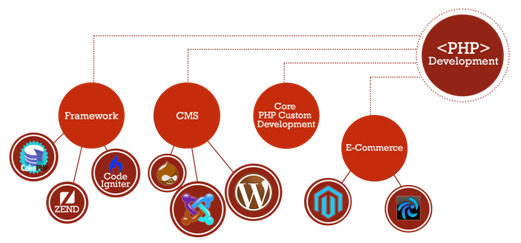
Today, PHP is extensively used and maximum demandable scripting language on the net. PHP is a totally famous scripting language that’s specifically designed for professional internet site improvement. PHP has end up one of the predominant gamers at the net improvement market inside the last few years. PHP programming language is the most preferred programming language that is applicable for internet site improvement as PHP can be without difficulty embedded into HTML code.
PHP’s extensions provide unrivaled functionality in comparison to some other net scripting language to be had, which has been made to be had through countless developers bringing together a significant collection of open-supply software from across the net. PHP is much like Microsoft Active Server Pages, Java Servlets and Cold Fusion Module however is usually held to be a good deal simpler to application (or ‘script’) with, a lot faster than its competitors and, first-class of all, it is loose to use and distribute. One of the most powerful and most huge features in PHP is its guide for a wide range of databases. If simplicity, pace of development, and economic system are taken because the important factors, then PHP need to be the fine.
ADVANTAGES OF PHP WEB DEVELOPMENT:
• PHP is Open Source. Open Source means you by no means want to rely on the producer to launch the next model if some thing doesn’t paintings or pay for pricey improvements.
• PHP is extendible.
• Large amount of databases are supported.
• PHP is platform impartial. It will run on most of the structures.
• Compatible with servers like IIS and APACHE.
• Low improvement and upkeep value with very excessive performance and reliability
What’s new in ultra-modern PHP Version?
• Extended help for Object Oriented Programming.
• Improved aid for MySQL with a new MySQL extensions.
• New equipment to read and modify XML docs in SimpleXML extension.
• Embedded server-side storage mechanism with SQLite.
• New error dealing with module.
• New extension for SOAP implementation.
• Data dealing with via iterators.
Reasons Why PHP is most Popular Among Web Developers
PHP boasts Simplicity
With PHP, coding is like writing an essay in English for a pc to study, besides the essay is a piece of code that instructs it to create and run websites in the maximum efficient way viable. Creating a code in PHP is straightforward, and although you’ll pay attention a few builders complaining that this doesn’t construct the vital coding behavior that streamlines (study standardizes) coding, it allows the code to be extraordinarily personalized (and hence less complicated to defend).
PHP Is FREE
PHP is an open supply language: unfastened, is easy to apply, and has an exquisite quantity of to be had documentation — making it the most price-powerful method of making robust websites and taking on on line actual estate area without traumatic approximately criminal responsibilities and subscriptions charges.
Furthermore, PHP reduces limitations to entry for brand new internet site developers, letting them really leverage their skills and abilties for coding to get began.
PHP Works Exceptionally Well With CMS
The contemporary (and recent) fashion towards adaptive content material has made CMS customization a important competitive want for corporations. Adaptive content material is content material customized for the person tourist to the internet site (using sign-in, or vacationer history) to create a one-to-one revel in for traffic. This is most effective feasible if the internet site’s code can be customized and incorporated with the CMS.
PHP makes web sites amoebic, permitting the developers to transform them at their will. All PHP web sites are completely customizable and may be converted to meet the necessities of the customers effectively because Content Management Systems like WordPress, Drupal, Joomla and others are based totally on PHP. Hence, developing or integrating a robust custom-made CMS solution together with your website is easy.
PHP is Powerful Flexible and Scalable
Facebook, the biggest and most effective social media platform is jogging on PHP. Facebook has even created a PHP by-product language, named “Hack” to fulfill the emerging desires of the giant’s content material management needs. This indicates the extent of flexibility, robustness, and scalability that is built into PHP. Compared to different languages, PHP’s biggest advantage is that the internet site’s code may be updated without requiring a server reboot!
PHP gives Diverse Frameworks
PHP is able to deliver pretty speedy turnaround instances because it has a sufficiently big own family of PHP-frameworks. These variety from the company degree Zend and Yii frameworks, all rounder Laravel and Sympfony, overall performance optimizers like Phalcon, and PHPixie for quick software designs or Code igniter for extra robust ones.
Conclusion
The PHP programmers nevertheless must placed a further time and efforts in writing the internet software in PHP. They should avail the resources that are supplied via diverse frameworks and content control system for lowering the improvement time drastically. Choosing PHP language for Website development company in jaipur will absolutely provide you superb outcomes to build a website for your business.
#website devlopment company in jaipur#seo trainning in jaipur#php trainning in jaipur#php coaching in jaipur#best smo services in jaipur
1 note
·
View note
Text
Laravel 6.0: What You Should Know

Since the inception of Laravel 5.0 around 4.5 years ago, the Laravel ecosystem has blossomed into something that leaves users nothing to complain about, to say the least. Laravel Nova, Laravel Horizon, Laravel Echo, Laravel Scout, and Laravel Passport are just some of the tools that have been introduced since then. At the time of this writing, we’re on Laravel 5.8 and Taylor Otwell has decided to skip past 5.9 on to 6.0 on the 3rd of September. Previously, Taylor has stressed that this won’t be a major paradigm shift for Laravel and the most significant change will be the transition to semantic versioning. However, this doesn’t mean that there aren’t plenty of new features worth talking about.
Let’s dive into some of the smaller changes first.
The Smaller Things
Authorization

Authorization messages can now be made easier for users to understand. Before Laravel 6.0, the infrastructure wasn’t in place to easily give a specific response to a user when they were given an authorization-related error. The status code could be given fairly easily, but giving a custom error message was more complicated back then. Giving a custom messaged required the developer to create a new file and write their own exceptions.
Now, to get a customizable authorization response, you can simply use the Gate::inspect method when linking to the function that enables you to receive the response. Delivery of the message to the front-end is also easy to organize. Simply add $this->authorize or Gate::authorize to a suitable route or controller.
No More Default Front-End
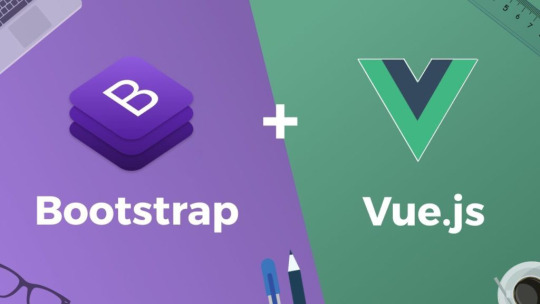
The typical front-end setup you are given when you first start a Laravel project is now gone. This means the Vue and Bootstrap code you would usually see, would have now been removed. What it’s been replaced with is unknown. Perhaps, it hasn’t been replaced. Strangely, the make:auth command, used to provide the login system scaffolding is now not a part of the original Laravel install either. To be honest, the rationale behind this change is unclear to me. However, given Laravel’s versioning adjustment, it makes sense that third-party technologies like Vue and Bootstrap that haven’t recently undergone the same changes could cause conflict. Though, this is merely speculation.
If you want access to the old UI, you can extract a composer package that contains it with the CLI: composer require laravel/ui and php artisan ui vue --auth.
Lazy Collections

This is one of the more interesting additions. If you’re new to Laravel, Collections are tools that make it easier for you to manipulate arrays. Eloquent, one of the two main tools in Laravel used to communicate with databases, returns its queries as Collection instances. Check out the docs for Collections if you think you’re gonna lack context in a moment. https://laravel.com/docs/5.8/collections
So, what are Lazy Collections? Traditional Collections are often used for working with large amounts of data. When they run into data-heavy files, they’ll try and store all of that data at once. This may sound quick and convenient but the downside is that this is very memory-taxing. Lazy Collections solve this problem by only storing the part of the file they need, and thus, save memory usage and boost performance.
If you understand how lazy loading works then you’ll be familiar with my previous explanation. Lazy loading works the same way. When you make a request to the server with lazy loading implemented, the browser will only return the part of the web page it knows you’re going to use immediately. Then, when the user scrolls down the page or clicks on an internal link, the server will provide you the necessary content it knows you need. This way, only memory that is needed at that particular moment is being used. This method increases speed. Lazy Collections is kind of like lazy loading but with arrays from a database and not content on a webpage.
The Bigger Things
Laravel Ignition
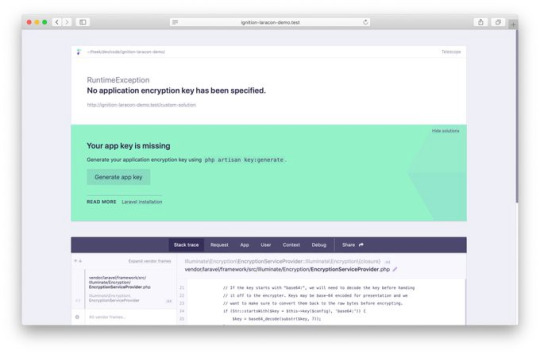
So yeah, the new error page for Laravel is called Ignition and it looks awesome. It’ll be the default error page for Laravel when 6.0 releases. However, if you don’t feel like making the switch to 6.0 just yet, that’s fine, you can still install Ignition on previous versions. Let’s talk about what Ignition brings to the table.
With Whoops (the current default Laravel error page), stack traces and relevant code snippets are shown in an error page, but this doesn’t always lead the developer to the solution. Worse, sometimes the stack traces just reference compiled paths. This can it make it difficult to find the necessary non-compiled files to fix because they aren’t listed anywhere on the error page. Thankfully, this isn’t a problem with Ignition, it can display to you the non-compiled file where the problem actually exists. By clicking on a pencil icon, you can go directly to the file in your chosen editor.
The second coolest feature of Ignition is that it can display potential solutions when displaying an error message. Most error pages just leave you with the error. For example, if the error is that you misspelled a property name, Ignition will tell you that the property has been misspelled and offer you the correct spelling. Solution suggestions can be way more sophisticated than this, I’ll link you to the source down below. Your suggestions are even customizable!
You wanna know the coolest feature? These solution suggestions are actually runnable!

Yes, really. Take a look at this short demo by one of the creators, Freek Van der Herten.
https://youtu.be/EZu0-CwTU9Q
Also, you can add your own runnable solutions too! This is great as Ignition is open source so people in the Laravel community will undoubtedly contribute their own solutions for everyone to use.
There’s a bunch of other cool features too such as creating your own tabs (yes Ignition has tabs) and sharing your error messages with other people. This is done using Flare, a tool that comes with Ignition.
For everything about Laravel Ignition and Flare, visit https://freek.dev/1441-ignition-a-new-error-page-for-laravel.
Laravel Vapor

Another big one. Laravel Vapor is a serverless deployment platform for Laravel. But wait, why do we need a deployment platform? We already have Laravel Forge, right? As beloved as Forge is amongst the Laravel community, it does have its limitations. It doesn’t have autoscaling to deal with large sudden increases in traffic that prevent your site from crashing. Also, configuration is required when OS or PHP updates occur. Vapor has autoscaling, so, you don’t have to worry about sudden spikes in your traffic causing website downtime. In addition, because of the serverless structure of Vapor, it also handles all the updates you may stress about when using Forge.
Vapor’s website is very clean looking and everything seems easy to find. When you deploy a project, you can see the different stages of the deployment process loading on the UI. I find this to be very reassuring and comforting. You can also rollback your application with a click of a button. Just click on “rollback” and it’ll do just that. Pretty neat. Same deal if you want your app to undergo maintenance. Just click on the “maintenance mode” button.
Another cool feature of Laravel Vapor is that you’re able to set alarms. What do I mean by that? For example, to know when your website traffic suddenly blows up, you can set a certain amount of HTTP requests per minute, and if your website hits that limit, the alarm will go off, informing you of the surge in traffic. Taylor Otwell showcases this and other conditionals in his Laravel Vapor demo which I’ll link to below.
There’s so much to cover with Laravel Vapor and the Laravel update itself. Because of this, I didn’t really want to dive into the complexities too much in this post. To learn more about the technical aspects of Laravel 6.0, you can take a look at the release notes here https://laravel.com/docs/6.0/releases. For more info on Laravel Vapor, visit this video by Taylor Otwell https://www.youtube.com/watch?v=XsPeWjKAUt0&t=362s.
1 note
·
View note
Text
News Dump and DD Collection Methods (5/14) - Laravel 5.5 New Features
News Dump and DD Collection Methods (5/14) – Laravel 5.5 New Features
[ad_1]
Collections have always been one of my favorite features of Laravel. We most commonly use collections with our Eloquent models, but many large datasets that Laravel works with support collection dumping.
Sidenote: if you want to use these collection methods with flash messages, or in general want a better way to work with flash messaging, check out the package I wrote called “LaraFlash”…
View On WordPress
1 note
·
View note
Text
Collections Example from Laravel Core: How Benchmarking Works

How does the Benchmark::dd() method in a recent Laravel release operate internally? I want to use it as an illustration of how well Laravel collections can be used.
0 notes